In Japanese, fujoshi 腐女子, meaning literally "rotten girl," refers to a girl that fantasizes about guys being in a homosexual relationship with other guys, specially shipping male characters with other male characters in manga and anime, writing gay fanfics, drawing gay doujinshi 同人誌, and fan art featuring them, and enjoying gay genres called BL (Boys' Love) and yaoi やおい / 801.
Anime: Outbreak Company (Episode 4)
Definition
The term fujoshi 腐女子 means "rotten girl." It's a self-deprecating label used by girls into gay shipping: just like weebs call themselves degenerates, fujoshi call themselves rotten, in the sense that they must have a rotten brain to have all these perverted gay shipping fantasies about characters from stories that don't feature gay characters to begin with.
- {kusatta} joshi
腐った女子
A girl [that] {rotted}.
A rotten girl.
This could have been due to a homophobic culture labeling homosexual relationships as forbidden relationships, morally wrong, considering if you ship a guy with a girl, that's okay, but a guy with another guy is "rotten," or the fact that fujoshi don't consider relationships in BL to reflect gay relationships in real life, implying the reason they feel rotten is for turning homosexuality into a fetish (or, more specifically, into a moe 萌え attribute) and then perverting characters by applying this "BL fetish" onto them.
In any case, a fujoshi may try to hide the fact that she's a fujoshi, and avoid letting her friends and family know about her weird gay-shipping hobbies, just like some anime fans would rather not be associated with, well, anime.
vs. Otaku
The term fujoshi isn't synonymous with otaku オタク. These are distinct terms. An otaku is someone who has a mania, a hobby, like liking anime. Although in anime the average otaku character is male, female otaku also exist.
- Exceptionally, Kuragehime 海月姫 uses the term fujoshi to refer to otaku girls that don't wear makeup or dressing fashionably.(dic.nicovideo.jp:海月姫)
Typically, a fujoshi is into anime, and they're a female otaku, shipping male characters with other male characters. However, some fujoshi ship real people with other real people, and they aren't into anime. A fujoshi may ship male members of a band with each other, for example.
In particular, a fujoshi character in an anime will ship other characters from the same anime
Right: Sakamachi Kinjirou 坂町近次郎
Anime: Mayo Chiki! まよチキ! (Episode 2)
- Context: a fujoshi imagines Kinjirou in a gay relationship with Subaru, right in front of him.
- mousou
妄想
Delusion. Fantasy.- The favorite pastime of fujoshi and chuunibyou 中二病 characters.
All types of characters popular with a female otaku audience are also popular with a fujoshi audience, and for every type of anime girl for male otaku, there's a type of anime boy counterpart for female otaku. For reference:
- bishounen
美少年
Beautiful boys. Pretty boys. Sometimes called a "bishie" in the western fandom.- A male bishoujo 美少女.
- ikemen
イケメン
Hot guys. - shota
ショタ
Little boys. For etymological reasons, associated with short pants, called hanzubon 半ズボン, "half-pants."- A male loli ロリ.
- bocchan
坊っちゃん
Rich boys. (e.g. accompanied by a "butler," shitsuji 執事, servants, etc.)- A male ojousama お嬢様.
- Other terms like tsundere ツンデレ, yandere ヤンデレ, do-S ドS, etc., can also be used to refer to male characters.
Besides the above, characters and scenarios where a guy is feminine are also popular with fujoshi.
- otokonoko
男の娘
"Male girls." (literally.)
Boys that look like girls, called "traps" in English. - josou
女装
"Female clothes." The act of wearing them.
Guys crossdressing. - okama
オカマ
An effeminate man, gay man, or trans woman. Sometimes considered pejorative. - onee
オネエ
A (gay) man who uses an exaggerated variant of female language called onee-kotoba オネエ言葉, including phrases like kashira, da wa, desu wa, wa ne. Similar to the so-called "gay lisp." - nyotaika
女体化
"Female-body-fication."
A guy physically becoming female, typically by magical or sci-fi means, i.e. gender-bending.
Jada, ジャダ
Thatcher, サッチャー
Bjorn, ビョルン
Marion, マリオン
Maraich, マライヒ
Etrange, エトランジュ
Anime: Patalliro!, パタリロ! (Episodes 1, 2, 3, 4, 5, and 6, respectively)
- Context: there's one woman and five pretty boys in this picture.
Shipping
A fujoshi doesn't simply ship guys with other guys. She also places a sometimes obsessive importance in figuring out who is the seme 攻め and uke 受け of a relationship, that is, who is the "top" and who is the "bottom."
- seme
攻め
Attack.
Attacker.
Top in gay shipping, as in who penetrates.
Assertive or lead in straight and lesbian (yuri 百合) shipping.- The noun form of semeru 攻める, "to attack."
- uke
受け
Reception.
Receiver.
Bottom in gay shipping, as in who is penetrated.
Passive or receptive in straight or lesbian shipping.- The noun form of ukeru 受ける, "to receive."
These are anime slangs. LGBT slang counterparts would be tachi タチ, neko ネコ, and riba リバ.
It's a meme that you can ask someone the antonym of seme (attack, attacker) to figure out if they're an otaku or not: an otaku will say uke (receiver), while a normie will say mamori 守り, "defense,"
- Context: Tsunashi Youta 十陽太 receives a word of warning of his brother, a bit too late.
- ato omae... anmari Kaoru ni fu-chishiki wo dasu na
あとおまえ・・・あんまりカオルに腐知識を出すな
[Also]... don't throw too much rotten-knowledge at Kaoru. - ore no yome wa ippanjin da
俺の嫁は一般人だ
My wife is a normie.- ippanjin
一般人
General person, normal person, who isn't related to an activity.
A normie.
- Not to be confused with riajuu リア充.
- ippanjin
- e!?
え!?
Eh!? - Ka, Kaoru-dono, seme no taigigo wa!?
カオル殿攻めの対義語は!?
Ka, Kaoru-dono, [what] [is] the antonym of seme? - e? eto... mamori?
え?えと・・・守り?
Eh? Erm... defense? - ...Kaoru-san, {sakki made boku ga itta} koto wa subete wasurete-kudasai......
・・・カオルさんさっきまで僕が言ったことは全て忘れてください・・・・・・
...Kaoru-san, please forget everything [that] {I said until [now]}.- The dots beside the furigana are there for emphasis.
- They add emphasis to the ~san suffix and the first person pronoun boku, because normally Youta uses sessha as first person pronoun, and calls other people by ~dono, both things that otaku do, upon learning that Kaoru isn't an otaku, he switches to speaking like a normal person.
- haa...
はぁ・・・
*sigh* - kakyuu-teki sumiyaka ni...
可及的速やかに・・・
As quickly as possible...
In Japanese, a pairing of two characters is called a "coupling," kappuring カップリング, abbreviated kapu カプ, or CP. The pairing is denoted by a multiplication symbol (×), which is read as kakeru かける, "to multiply." In English, a slash (/) is used instead, and fanfic with such pairings is also said to be of the "slash" genre. The pairing names are often abbreviated. The order of the names in a pairing matters: the seme comes first, the uke comes last.(dic.pixiv.net:カップリング, fanlore.org:Pairing Name)
- Naruto kakeru Sasuke
ナルト×サスケ
Naruto/Sasuke.- NaruSasu
ナルサス - Naruto is seme, Sasuke is uke.
- NaruSasu
- Sasuke kakeru Naruto
サスケ×ナルト
Sasuke/Naruto.- SasuNaru
サスナル - Sasuke is seme, Naruto is uke.
- SasuNaru
Pairings aren't limited to fictional characters.
- Context: Tsunashi Youta 十陽太 talks about the doujinshi he has to make.
- sessha kakeru anija kapu no orihon de gozaru!!
拙者×兄者カプのオリ本でござる!!
[It] is an orihon with me × [my] older brother as couple!!- Note: using sessha 拙者 as first person pronoun and ending one's sentences with de gozaru でござる are things only samurai characters and otaku do, and this is no samurai.
- komike mo chikai shi, ganbaraneba!!
コミケも近いし頑張らねば!!
The comiket is soon, too, so [I] have to work hard!! - orihon: {tokutei no sakuhin wo daizai to shita} niji-sousaku dewanaku, orijinaru no naiyou no hon (ikooru doujinshi).
オリほん[おりほん]:特定の作品を題材とした2次創作ではなく、オリジナルの内容の本(=同人誌)。
orihon: not a derivative work [that] {makes as theme a certain work}, a book of original content (= doujinshi).
The ships fujoshi ship are typically heteronormative: the uke is the "girl" of the relationship. He's generally the more feminine character of the two, the shorter, weaker, more timid one, maiden-like, whom the seme, as the "guy" in the relationship, would protect or court.
- homo-yuri
ホモ百合
A term for a ship consisting of two uke characters, "gay yuri," as in "gay lesbian fiction," because it's gay, but between two "girls."
The cute one is the uke, the cool one is the seme, which, coincidentally, tends to be expressed in anime through eye shapes: cute characters have tareme タレ目, drooping eyes, slanted upwards, while cool characters have tsurime ツリ目, slanted downwards.
Sibling characters tend to have different personalities also reflected in eye shapes, so the seme and uke of an incestuous ship can be ridiculously easy to figure out.
Right: Kinrou 金狼
Anime: Dr. Stone, ドクターストーン (Episode 7)
- Context: Ginrou has tareme, so he's the uke.
Right: Alphonse Elric アルフォンス・エルリック
Anime: Fullmetal Alchemist: Brotherhood, Hagane no Renkinjutsushi 鋼の錬金術師 (Episode 12)
- Context: Edward has tsurime, so he's the seme, in spite of being shorter in stature.
Personality is sometimes shown the usage of first person pronouns instead. Typically, timid characters use boku 僕, while assertive characters use ore 俺, so that's another way to figure this out.
Sometimes the power disparity isn't in physical strength and muscles but in authority and rank, e.g. the boss or manager of a salaryman is the seme, while he, a subordinate, is the uke. This includes seniority: the senpai 先輩, who is older, is the seme, while the kouhai 後輩, who is younger, is the uke.
If a character crossdresses, is drawn like a girl, i.e. if he's a trap character, or he's just somehow feminine, then he's probably going to be the uke of a ship.
- Context: Shuri Kojuurou 朱里小十郎, a boy that looks like a girl, compliments Makabe Masamune 真壁政宗 for being intelligent, humble, and kind, to which Makabe responds:
- yose yo, Shuri-kun
よせよ 朱里君
Stop [it], Shuri-kun. - omae datte "sou-uke no Kojuurou-kyun" toka iwarete ichibu no joshi ni daininki rashii zo?
お前だって「総受けの小十郎きゅん」とか言われて一部の女子にだ大人気らしいぞ
[I] hear you, too, are called [stuff like] "the total bottom Kojuurou-kyun" and are very popular with one portion of the girls?- In the sense of him being popular, too, with girls, like Masamune, except Masamune is popular for being a "hot guy," ikemen イケメン, while Kojuurou is popular only some girls (the fujoshi) for being an otokonoko.
- sou-uke - a type of uke that is always the bottom no matter what character he's paired with.
- ~kyun - a diminutive variant of the ~kun honorific suffix, typically used by female fans toward cute male characters.
- kyaa
きゃーー
*fangirling noises* - oseji janai tte
お世辞じゃないって
[I'm telling] [you] [it] isn't flattery. (i.e. Kojuurou really means the stuff he said about Masamune, they weren't insincere or joke compliments.)
There are exceptions to this rule, but they tend to be merely subversions of the usual expectation, and, as such, they're given names:
See types of seme and uke for details.
- josou seme
女装攻め
Crossdressing seme. When the crossdresser isn't the uke. - sasoi uke
誘い受け
Inviting uke. When the uke is the assertive one making the first move.
- Context: a fujoshi carefully analyzes a situation.
- senpai wa sasoi-uke!!
先輩はさそい受け!!
[Your] senior is a sasoi-uke!! - gekokujou!! gekokujou!!
下剋上!!下剋上!!
Inferiors overthrowing superiors!!- The term gekokujou refers to retainers supplanting their lords, and other situations where someone who is inferior in a hierarchy ends up above someone who was superior.
- As a BL slang, gekokujou refers to a scenario where someone lower in a hierarchy is the seme, e.g. the retainer is the seme and the lord is the uke, or the employee is the seme and his boss is the uke, etc.
Genesis
Considering the above, I guess there are mainly two ways for a girl to become rotten.
- She sees guys sharing some sort of strong bond, and imagines them being gay for each other.
- She sees one guy being feminine, and imagines him being the "girl" in a gay relationship, the uke.
In the first case, a fujoshi sees two guys who are very good friends and like each other very much, and fantasizes there's something more, or she sees two guys who are rivals or enemies and hate each other very much, and fantasizes that's just sexual tension.
Right: Nicol Ascart, ニコル・アスカルト
Anime: Otome Game no Hametsu Flag Shika Nai Akuyaku Reijou ni Tensei Shiteshimatta…, 乙女ゲームの破滅フラグしかない悪役令嬢に転生してしまった… (Episode 3, Stitch)
- Context: Katarina Claes カタリナ・クラエス imagines her brother in a gay relationship with a new friend.
Right: Maaka Ren 真紅煉
Anime: Karin かりん (Episode 12, Censored)
- Context: Maaka Karin 真紅果林 imagines her brother seducing her boyfriend.
Generally speaking, characters don't get in romantic relationships in anime, gay or otherwise, specially in high school anime. Guys don't have girlfriends, much less boyfriends.
Fans have often taken it to themselves to create derivative works, fanfics, fan art, fan comics, "fanzines," doujinshi 同人誌, etc., in which the relationship they want becomes true, and of course the fujoshi are no different.
Right: Harry Potter
Anime: Asobi Asobase あそびあそばせ (Episode 4)
- Context: J. K. Rowling probably didn't write this.
The second rotten route is to imagine a guy being a girl.
There are countless gender stereotypes we use to figure out if someone is a man or a woman without having to ask them their gender, and, by extension, to figure out if something is masculine or feminine.
Women have vaginas, so having a vagina is feminine. Women have sex with men, so having sex with men is feminine. Women wear skirts, so wearing skirts is feminine. Women are delicate, so being delicate is feminine.
Rottenness happens when you traverse the stereotypes above in reverse direction and make a leap of logic like: this guy is delicate, therefore he must have sex with men.
In the shipping case, a fujoshi sees two characters of a series, and imagines they're gay for each other. In this case, a fujoshi sees a character that looks girly somehow, and imagines he's gay, i.e. that he's an uke.
There's no seme, or rather, the seme doesn't matter and could be anyone, the point is that the feminine male character is a bottom, and imagining such thing is rotten.
Left: Lloyd Belladonna, ロイド・ベラドンナ
Anime: Tatoeba Last Dungeon Mae no Mura no Shounen ga Joban no Machi de Kurasu You na Monogatari, たとえばラストダンジョン前の村の少年が序盤の街で暮らすような物語 (Episode 9)
- Context: Marie imagines Lloyd in bed with a random man.
Since fujoshi shipping is heteronormative, this sort of rottenness only makes sense with the uke.
By imagining a character is an uke, one imagines he would be a "girl," which means he would have a boyfriend, which means he would be in a gay relationship, and that's when the whole thing becomes gay.
If you imagine a character is a seme instead, then he would be the "guy," but he's already a guy. What does the guy do? He has a girlfriend. But wait... that means he's straight?! There's nothing gay here!
It's unlikely a non-rotten girl would see a male character and think: wow, this dude could top a lot of bishies. If she thought this she would be already rotten to the core by that point, so it's more likely to become rotten by fantasizing about a character being an uke instead.
A similar, but different situation occurs when an otokonoko character is made crossdress by girls in anime—and they typically take photos. The fact they look somehow feminine leads to the conclusion they would look well in female clothes.
Photographer: Kiryuu Moeka 桐生萌郁
Anime: Steins;Gate 0 (Episode 24, Special)
- Context: an otokonoko character is made dress like a fox girl, with fox ears and tail.
- onnanoko-zuwari
女の子座り
"Girls' sitting." A term for sitting on the floor forming a W shape with your legs, because it's said that only girls sit in this way.
Just a bunch of girls making an otokonoko character crossdress isn't rotten, strictly speaking. Although this is certainly the sort of thing a fujoshi character would do, and a fujoshi audience would enjoy, it isn't rotten if it isn't gay.
- Context: two different classes decide to do the same theater play, and a fujoshi class president decided to make the otokonoko character the heroine in one of those plays by making him crossdress.
- W-shirayukihime
W白雪姫
Double snow white.
Anime: Black Butler, Kuroshitsuji 黒執事 (Episode 4, Stitch)
- Context: Ciel, who is a boy, with the help of his butler, who is male, disguises himself as a girl, in order to dance with a guy, but not because he's gay—you see—this is all a mastermind plan, that for some bizarre reason just happens to involve all this stuff that fujoshi would fangirl over.
- Komadori Shieru
駒鳥シエル
Robin Ciel, as in the bird, Japanese robin. The name the fandom gave to this crossdressing design, because Ciel kept getting called by the name of the bird, as in "my robin," while disguised as a girl.
In particular, it's worth noting that a lot of clothing considered cute, like frills, ribbons, bright colors like pink, are also considered feminine, so it's possible for a girl to want to make a character wear a cute outfit, and it just happens all cute outfits are feminine outfits, so by coincidence it's crossdressing.
Bottom: Rimuru Tempest リムル=テンペスト
Anime: TenSura Nikki: Tensei shitara Slime Datta Ken, 転スラ日記 転生したらスライムだった件 (Episode 1, Collage)
- Context: Rimuru, a sexless shape-shifting slime who presumably identifies as male given that he uses the masculine first person pronoun ore 俺 and used to be a man in his previous live before dying and reincarnating in another world periodically gets made wear feminine clothes by his nakama 仲間.
Related Terms
There a number of terms derived from fujoshi, typically by prefixing a word with the "rotten" fu~ 腐~ morpheme. For reference, I'll list them here.
fumuke 腐向け
The term fumuke 腐向け refers to something "targeted at fujoshi." Since fujoshi are women, fumuke is a typically a subcategory of:
- josei-muke
女性向け
Targeted at women. For women.
A lot of merch is fumuke, e.g. a dakimakura だきまくら with two male characters kissing would be fumuke.
BL
The most fumuke thing is the gay genre called B., standing for "Boys' Love." If a fujoshi draws gay fan art featuring a ship from some anime, that's probably BL.
However, there are many series that aren't BL, strictly speaking, in spite of looking extremely gay for all sorts of reasons, such series are fumuke instead.
Although, honestly, it's hard to tell apart BL from not BL.
One thing that one can say for sure is that if the series is about two guys and their homosexual romance, with gay kissing and sexual scenes, that's BL, but some series come very close to that without actually having that, making the categorization things pretty difficult.
- Jingai-san no Yome 人外さんの嫁 is a series in which boys become brides for monsters, which logically labels them as uke, except the monster is literally a weird creature which honestly one wouldn't be able to tell is male or female.
- Sarazanmai さらざんまい is a series about gay frogs. I'm not joking. That's what the series is about. It has everything: butt stuff every episode, crossdressing, an actual gay pervert (who is not the crossdressser), a gay couple, non-consensual gay kissing, gay cheating. You know, I can't believe this isn't BL. This categorization makes no sense.
There are some things that are obviously not BL, but appear fumuke, specially series that look like a reverse harem, but there is no girl protagonist, just hot guys, or there may be a token female character that looks like she should be the protagonist's girlfriend, but who is mostly a side-character.
- Nanbaka ナンバカ is a series about prisoners in a prison, all of which look extremely colorful and sparkling.
Right: Matsuoka Rin 松岡凛
Anime: Free!, フリー! (Episode 4)
- Context: an anime about swimming.
- kabedon
壁ドン
The act of placing your hand against the wall to talk to someone, seen in romance, but practically a meme at this point.
In particular, multiple series published on GFantasy fall into this "it looks like it's for fujoshi" sense, e.g. Black Butler, Durarara, and Nabari no Ou 隠の王.
Right: Rokujou Miharu 六条壬晴
Anime: Nabari no Ou 隠の王 (Episode 1, Collage)
There are also cases of sports series ending up popular with fujoshi despite not being marketed at fujoshi due to the high number of male characters it needs to form multiple sports teams, like Haikyuu! ハイキュー! and Captain Tsubasa キャプテン翼..
Yaoi and Shounen-ai
In English, the term BL isn't very common. Instead, pornographic BL is called yaoi, and gay romance for general audiences is called shounen-ai. Sometimes yaoi is used to refer to gay scenarios in general. Explicit fanfics, including gay ones, are called lemons.
Although yaoi is obviously BL, sometimes a series categorized as shounen-ai isn't actually categorized BL in Japanese, and it was categorized as shounen-ai for being fumuke.
In Japanese, yaoi refers to PWP fanfics, porn without plot, usually the gay and parody ones, while shounen-ai 少年愛, meaning literally "boy love," is a term for pedophilia, although it seems that in the past it was a gay genre.
The word yaoi is also spelled with numbers as 801, e.g. as in Tonari no 801-chan. There are some synonyms for fujoshi that derive from yaoi, like:
- yaoi shoujo
やおい少女
An "yaoi" girl. - yaoraa
ヤオラー
Yao-rer. Probably in the same sense as kemonaa ケモナー, literally "kemoner," being a "furry" who likes kemono ケモノ art.
Bromance
Series where two male characters share a deep, but non-romantic bound, are sometimes categorized as bromance ブロマンス.
Fujobait
In English, fujobait refers to manga and anime that tries to lure a fujoshi audience by including characters and scenarios that look pretty gay and that would totally be in a BL story, but aren't actually gay and it isn't actually a BL story.
Anime: Gintama 銀魂 (Episodes 92, 145, 193)
- Context: Gintoki talks about how Aniplex sells DVDs.
- mattaku, maikai maikai azatoi jaketto de tsuri-yagatte, Anipurekkusu!!
全く、毎回毎回あざといジャケットで釣りやがって、アニプレックス!!
[Good grief], every time every time [you] lure [consumers] with [these] aggressive covers, Aniplex!- jaketto
ジャケット
Jacket. Includes the CD jacket, i.e. the cover of a CD he's holding. - azatoi
あざとい
Aggressive. Pushy. In the sense of being unscrupulous about something.
- jaketto
The term is similar to queerbait, which is when a work hints that characters are LGBT, without explicit making them LGBT. When the same happens with yuri, it's called yuri bait.
Right: Victor Nikiforov ヴィクトル・ニキフォロフ
Anime: Yuri!!! on Ice, ユーリ!!! on ICE (Episode 3, Stitch)
- Context: the anime that will make you wonder if making gay anime is a crime somewhere given all the *wink wink nudge nudge* through the entire thing.
- agokui
顎クイ
Chin-tug. The term for holding someone's chin like this.
Sometimes, fanservice targeted at fujoshi is also called fujobait.
Behind: Fujinomiya Neko 藤ノ宮寧子
The guy: Makabe Masamune 真壁政宗
Right: Shuri Kojuurou 朱里小十郎
Bottom: Adagaki Aki 安達垣愛姫
Anime: Masamune-kun no Revenge, 政宗くんのリベンジ (Episode 7)
- Context: a harem composed by two girls and one guy.
Bara
The term bara 薔薇, literally "rose," refers to gay fiction made for a male, gay audience. It's specially used in contrast to BL, which targets a female audience.
- gei-muke
ゲイ向け
For gays.
The term bara isn't common in Japanese. Instead, terms like the following are used:
- gei komikku
ゲイコミック
Gay comics. - geikomi
ゲイコミ
The origin of the term is probably the name of a gay magazine Bara-zoku 薔薇族, in which some gay comics were published, including the one from the yaranaika やらないか meme.
Anime: Jashin-chan Dropkick, 邪神ちゃんドロップキック (Episode 4)
The gay comics made by gay men are going to be more grounded on reality as far as gay relationships are concerned. Aesthetically speaking, they tend to feature more muscular, fatter, and hairier male characters.
Presumably, this difference in aesthetics happens because the comics are artists drawing actual men, while BL is fujoshi drawing prince-like guys from shoujo manga.
Why the prince isn't a hairy hunk? Why boy bands aren't full of hairy hunks? The only answer that makes sense is that, for some reason, the sort of man that fujoshi like to ship and the sort of man that gay men like to see are different.
Mostly unimportant, but: when a fujoshi character fantasizes two guys in love, usually roses are drawn in the background.
Right: Kotoura Haruka 琴浦春香
Anime: Kotoura-san 琴浦さん (Episode 5, Censored)
- Context: lilies drawn in the background when two girls are depicted in lewd manner, because yuri means "lily."
yume-joshi 夢女子
A yume-joshi 夢女子, literally "dream girl," is a girl that ships a male character with herself, or an avatar of herself. The term doesn't mean that she's dreamy, as in gorgeous, it means that she's literally dreaming of having a romantic relationship with her husbando.(dic.pixiv.net:夢女子)
More specifically, a slash fanfic that features one's own original character, including by inputting your name in a webpage that changes the name of the character in the story, is called a yume-shousetsu 夢小説, "dream story,"(dic.pixiv.net:夢小説) so a yume-joshi is a girl that enjoys yume-shousetsu.
fudanshi 腐男子
A fudanshi 腐男子 is a male fujoshi, literally a "rotten boy." A fudanshi isn't necessarily gay himself, he's merely a guy who, like the fujoshi, ships guys in gay relationships with other guys.(dic.pixiv.net:腐男子)
hime-danshi 姫男子
A hime-danshi 姫男子, meaning "princess boy," is a guy who ships two female characters in a lesbian relationship. A synonymous term is yuri-danshi 百合男子.(dic.pixiv.net:姫男子)
Original fujoshi 婦女子
The word fujoshi 婦女子, meaning "wife and children," literally "wife and girls," is the origin of the "rotten" slang fujoshi 腐女子.(デジタル大辞泉:腐女子)
kifujin 貴腐人
A kifujin 貴腐人 is an older fujoshi, as in older than 30 years old. This term, too, is a pun, this time on kifujin 貴婦人, "noblewoman."(dic.pixiv.net:貴腐人)
fukei 腐兄
The word A fukei 腐兄 is synonymous with fudanshi. It's a pun on fukei 父兄, "father and older brother."(dic.pixiv.net:腐男子)
References
- Pairing Name - fanlore.org, accessed 2021-05-31.
- カップリング - dic.pixiv.net, accessed 2021-06-02.
- 海月姫 - dic.nicovideo.jp, accessed 2021-06-02.
- 腐男子 - dic.pixiv.net, accessed 2021-06-04.
- 姫男子 - dic.pixiv.net, accessed 2021-06-04.
- 夢女子 - dic.pixiv.net, accessed 2021-06-04.
- 夢小説 - dic.pixiv.net, accessed 2021-06-04.
- 貴腐人 - dic.pixiv.net, accessed 2021-06-04.
- 腐女子 - デジタル大辞泉 via kotobank.jp, accessed 2019-05-16.

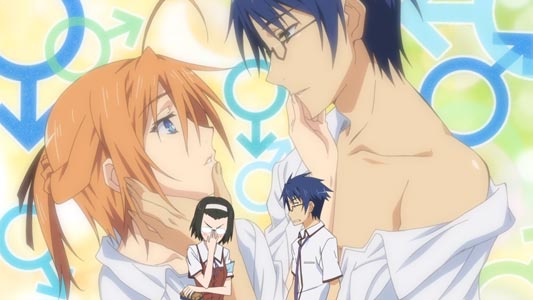
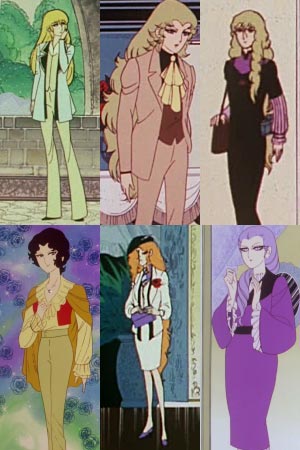
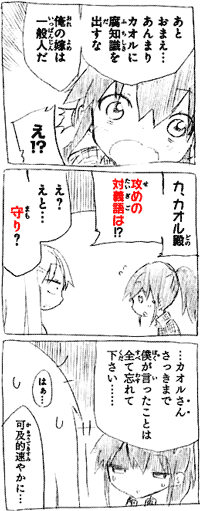
![拙者×兄者カプのオリ本でござる!! コミケも近いし頑張らねば!! オリほん[おりほん]:特定の作品を題材とした2次創作ではなく、オリジナルの内容の本(=同人誌)。](https://media.japanesewithanime.com/uploads/orihon-danna-ga-ch04.png)
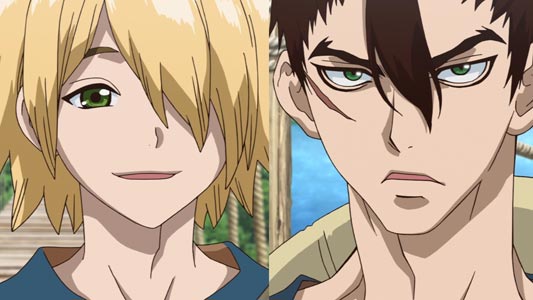

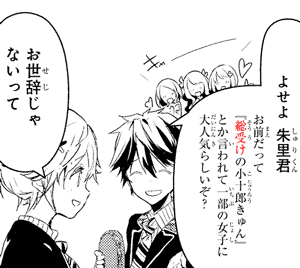

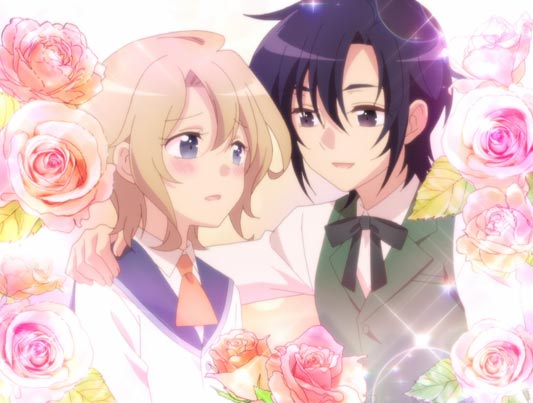

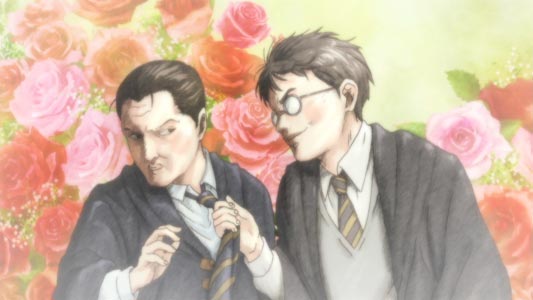

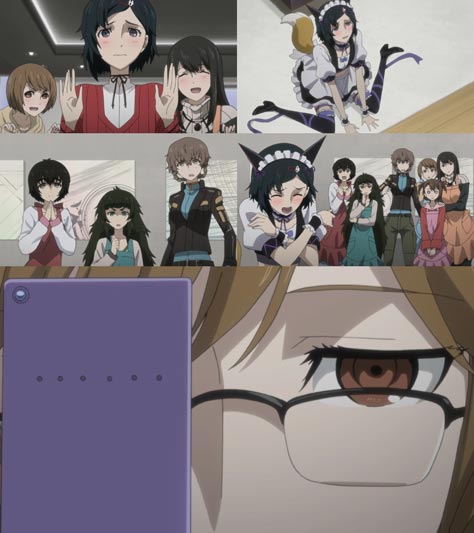

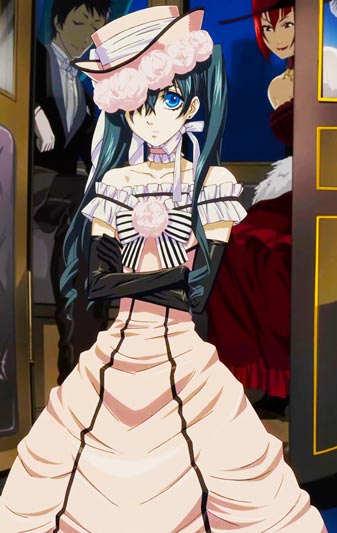
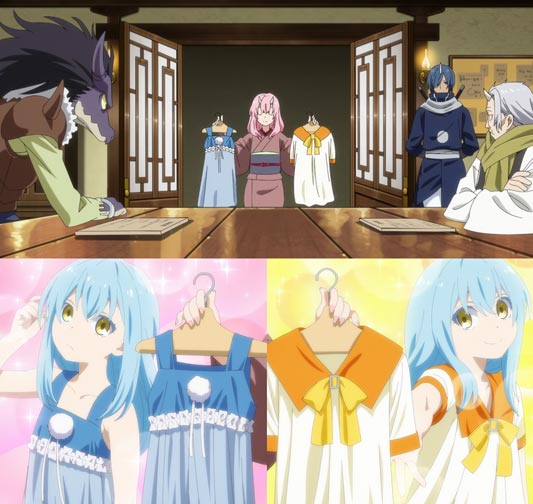
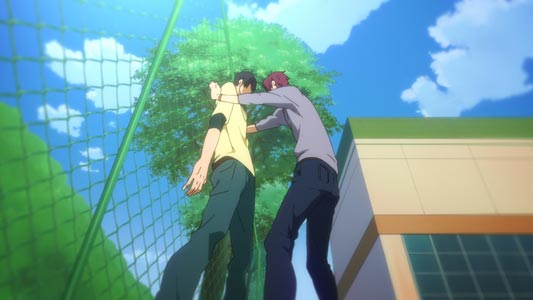
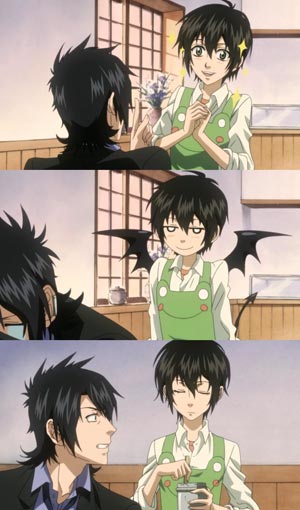
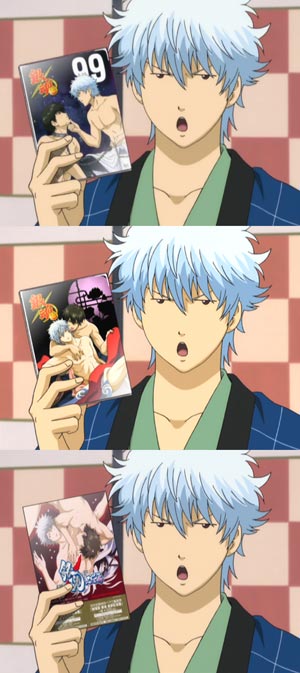
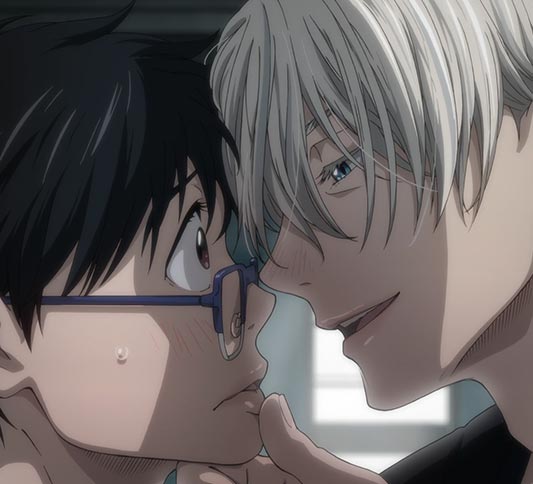

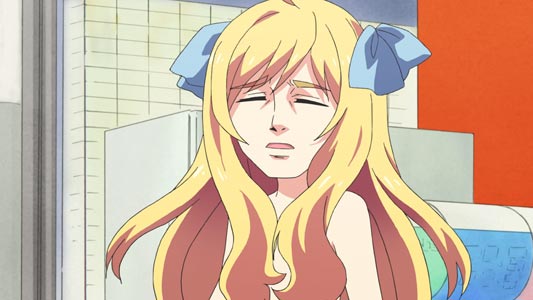

Thank you very much for a throughout explanation of 腐向け which translation softwares only seem to translate as "of rot" or "of decay".
ReplyDelete